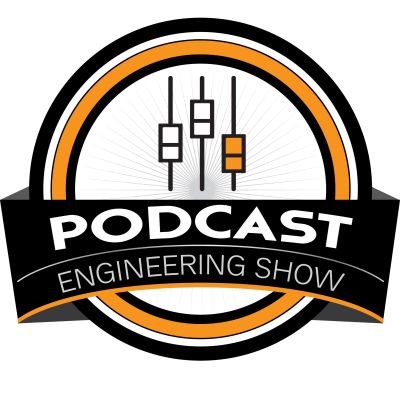This show focuses on the technical production of audio podcasts. Chris Curran chats with podcasters about their audio equipment, software and workflow to help you learn how to produce better sounding podcasts. You’ll also learn solutions to common audio issues as well as plenty of tips and tricks. By listening to this show you will gain a TON of knowledge and skills that will make a HUGE difference in your sound quality _and_ save you time! Subscribe/Follow today and start listening! Your host Chris Curran has a background in podcast production (Forbes, Dun & Bradstreet, J&J, etc) as well as music production (Sarah McLachlan, Jeff Buckley, Foreigner, etc). When he entered podcasting in 2012, he noticed that most podcasters (and producers) do not have a good understanding of fundamental audio engineering concepts, which sabotages the quality of their sound from the very beginning. This show, as well as Podcast Engineering School, helps podcasters and producers reach professional levels of podcast audio production.
https://podcastengineeringschool.com/category/show/
episode 131: Shawn Kitchen
My guest is Shawn Kitchen - host of the Northwest Corner Podcast. He lives in Spartanburg, SC, was formerly trained in radio and tv, and is currently records his show using a Live format to reduce post-production time.
We discussed his production workflow and equipment in detail, including:
- Using a Kindle tablet to play sound FX
- Riding faders Live
- Mixer has one knob compression on each channel
- Mic technique
- Using subgroups: Voices to one group, music to another group, then record each group separately on his Zoom H6
- Chris’s Compression Dynamics plugin within Audacity
- Noise reduction in Audacity by creating and using a custom noise profile (he removes 14 or 15 dB of noise!)
- Record everything 24 bit / 44.1 kHz
- Soundcloud
- Behringer X2222USB analog mixer
- Behringer UMC404HD interface
- Tascam DR-40 field recorder
- Zoom H6 field recorder
- Behringer XM8500 dynamic mics
- MXL FR-355K lavalier mics
- Audacity
- Hindenburg
- Soundpad app for Android on Kindle Fire 8HD tablet
- iRig 2 instrument interface
- Behringer headphone distribution amp and headphones (for up to 8 people)
- All post-production done in-house on Dell desktop with Core I5 processor using primarily Audacity, but have been using Hindenburg more frequently in recent time. Pre-recorded music tracks (except show theme) are separated into new tracks. All vocals are run through a combination of soft limiter, compression, and then amplification to -1.0 dB. Noise reduction is done at the *end* of all other processing, using a 5-second segment of silence with all mics open at the beginning of each recording session. I've found that applying noise reduction at the end yields us with the clearest results.
Thanks for being a great guest, Shawn!
DID YOU KNOW........We exist for the purpose of helping you, so please comment below with any questions or remarks. We appreciate you listening.
Want to Start a Business or Have a Career as a Podcast Producer/Engineer?
Listen and Subscribe in Apple Podcasts, Spotify, Google Podcasts, iHeartRadio, Stitcher, TuneIn, Android, RSS, Email
